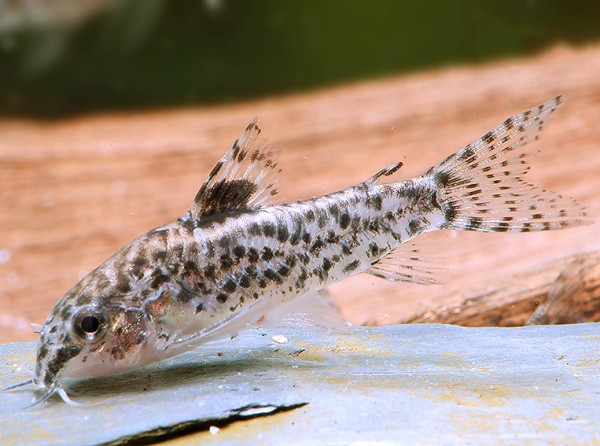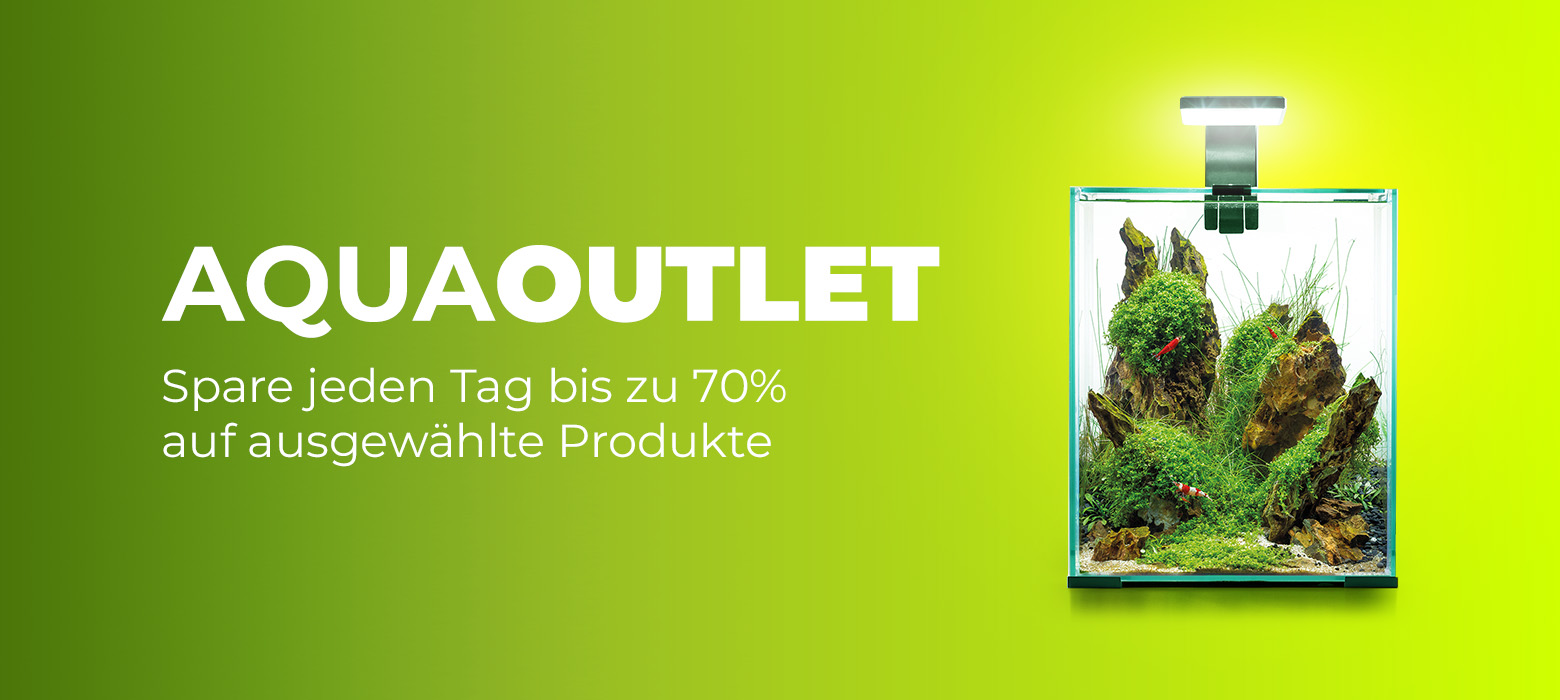incl. VAT plus shipping costs
Currently not available
Delivery only innh. Germany and Austria possible.
Switch to the German store
- Item no: 28983
Fast delivery times
All products are in stock with us!14 years of breeding experience
Let our team of experts advise you!High customer satisfaction
from over 3,000 reviews "| Water values: | soft to medium hard |
| Fish group: | Catfish |
| Temperature: | 22-28 °C |
| Visual effect: | Interesting behavior |
| Feature: | form family groups |
| Behavior: | Active |
| with fish?: | Yes, with peaceful fish |
| Pelvic region: | Below |
| Aquarium size: | 54 l (approx. 60cm) |
| Breeding: | simply |
| Origin: | South America |
| with shrimps?: | with dwarf shrimp, offspring may be eaten |
| Final size: | 1-4 cm |
| Planting possible?: | Yes |
| with snails/shells?: | Yes |
| Difficulty: | 1 - Simple |
| with large crabs?: | No |
| with dwarf crabs?: | No |
| with crabs?: | No |
The small spotted dwarf armored catfish or dwarf loach catfish Aspidoras pauciradiatus from Brazil / South America was originally described as Corydoras pauciradiatus and belongs to the family of armored catfish and callus catfish. The small loach armored catfish has dark irregular spots on a light background, a golden sheen and a large dark spot at the base of the towering dorsal fin. The Spotted Dwarf Armored Catfish displays a more or less pronounced dark stripe on the mouth, which enhances its loach-like appearance. The mouth of Aspidoras pauciradiatus bears the pairs of barbels typical of an armored catfish. Aspidoras pauciradiatus grows to a maximum length of 3 cm. The males of the dwarf loach tank catfish are slightly slimmer than the females. The small fish can live up to 13 years.
It feels comfortable at an aquarium temperature of 23-26 °C and soft to medium hard water with a pH of 6.5-7.5 and a total hardness of 5-15 °dGH. Aspidoras pauciradiatus needs an aquarium from 54 liters respectively 60 cm length or more. When setting up the aquarium you should make sure that there are plenty of hiding places for the small dwarf armored catfish - caves, shelters under roots or stones, clay tubes or plants are well accepted as hiding places.
The small, particularly sociable Spotted Dwarf Catfish needs as a group fish the company of 5-10 conspecifics to feel comfortable. A socialization with small tetras is also suitable, also with other peaceful small fishes with similar requirements the Dwarf Loach Catfish can be socialized, as well as with dwarf shrimps or fan shrimps - even if one cannot completely exclude that a particularly careless shrimp juvenile could be eaten by mistake. The dwarf loach catfish lives as a bottom dweller mainly in the lower water layers and digs in the substrate for food. Sandy substrate or fine gravel with rounded grains are very suitable for the armored catfish. On sharp-edged substrates they can severely injure their barbels.
The females of the Spotted Dwarf Catfish attach their eggs to the leaves of aquatic plants as adhesive spawners. Breeding in a separate breeding aquarium is more promising than in a community aquarium. Simply take the leaf with the eggs and put it into the breeding aquarium. The fish larvae hatch after a few days and are fed with Artemia nauplii after 2-3 days after hatching, when the yolk sac is exhausted. Also finely ground flake food or a special rearing food for young fish (for example NatureHolic Youngfeed) grown up.
The Spotted Dwarf Catfish is an omnivore, but has a distinct preference for animal foods. Sinking live food or frozen food is gladly taken, as well as food tabs for armored catfish or even the normal flake food or granulated food for omnivorous aquarium fish are gladly eaten.
| Scientific name: | Aspidoras pauciradiatus |
| German Name: | Spotted dwarf armored catfish, dwarf loach armored catfish |
| Difficulty level: | for beginners |
| Origin/Distribution: | Brazil / South America |
| silvery, golden overlaid body color, irregular spot and partly stripe pattern, dark spot at the base of the dorsal fin, dark longitudinal stripe at the mouth | |
| Age expectancy: | up to 13 years |
| Water parameters: | GH 5 to 15, KH 0 to 8, pH 6.5 to 7.5, temperature 23 to 26 °C |
| Tank size: | from 54 l |
| Food: | Omnivorous with emphasis on animal food, frozen food, live food of appropriate size, flake food, granulated food, special food for armored catfish |
| Breeding: | not very difficult |
| Behavior: | peaceful |
| Group size: | Group from 5-10 animals |
| Further information: | <a href="https://www.garnelio.de/blog/garnelen/welche-fische-vertragen-sich-mit-garnelen="_blank">Which fish get along with shrimp?</a>, <a href="https://www.garnelio.de/en/blog/aquarist-tips/socialization-of-fish-with-dwarf-crabs" target="_blank">Association of fish and dwarf crayfish</a>, <a href="https://www.garnelio.de/blog/krebse/vergesellschaftung-von-fischen-und-grossen-flusskrebsen" target="_blank">Association of fish and large crayfish</a></td> </tr> </tbody></table>
Customer questions and answers Discover now Entdecke die Garnelio Welt! Garnelio gehört zu den größten Onlineshops für wirbellose Aquarientiere weltweit. Last viewed Shopware Agentur six-media.de |






